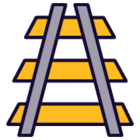When getting on a train to another destination in Europe how do you know which train station to get the train from and which station it goes to? Are there multiple options. Thanks.
Train stop locations
Best answer by EdM
If the station is simply named for the locality in which it is, that tells you either that it is the only station serving that locality - or at the very least that it is by far the main one. Examples might include stations like Brugge in Belgium, Luzern in Switzerland, or Oxford in Britain.
Where this is not the case - in cities served by more than one station of at least moderate importance - the name of the station that the train you are looking at departs from will be stated after the city’s name. Examples include Roma Termini, Paris Nord, and Dublin Connolly.
If you want a choice of departure stations within a city on a given train, this is sometimes (but not always) possible. If you search on the Interrail journey planner app, or on bahn.com (or similar) for trains linking the cities you want to travel between, you’ll find that the departure/arrival points it suggests tend to default to the most important stations in those cities that these particular trains serve. So for instance, if you were to search “Budapest” to “Wien”, it would probably show you trains linking Budapest Keleti and Wien Hbf - the most important railway stations in their respective cities.
But if, for whatever reason, you wanted to board or alight at a different stop in Budapest/Vienna, you could look for a button on the results screen marked something like “Show Intermediate Stops”, or simply click on the train service number (usually something like “IC” or “RE” and then some numbers, depending on the train type). Once you do this, you should be able to see if there are other, secondary stops the train makes along this route which might be preferable for you - for instance, Budapest Kelenfold or Wien Meidling.
If you find that there are, and it is for a train that you want or need to make a reservation for, run the search again, entering the full station name this time rather than just the city, as reservations should correspond as exactly as possible to the stations you intend to use.
You can sometimes tell the most important station in a city because it will be named “main” or “central” in the local language. (This works as a general rule, but there are exceptions in which the main station is not the most central station and vice versa!) Stations that mean one of these two things are most often rendered a variation of the word “Central”, or in German-speaking countries and Denmark they are called Hauptbahnhof/Hovedbanegard (Hbf/HB/H), and Slavic nations often use Hlavni, Glavni, Glowny etc.
Enter your E-mail address. We'll send you an e-mail with instructions to reset your password.




